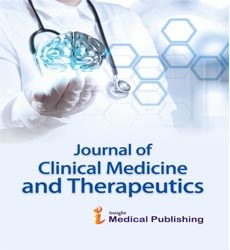Congestive heart failure and clinical syndrome
Abstract
Heart failure describes the clinical syndrome that develops when the heart cannot maintain an adequate cardiac output. Causes of heart failure are The most common causes of heart failure are coronary heart disease, hypertension, alcohol abuse, and idiopathic dilated cardiomyopathy Other causes are valvular and pericardial disease; or non-cardiac diseases causing high-output cardiac failure, such as anemia, thyrotoxicosis, septicaemia, Paget's disease of bone, and arteriovenous fistulae. The heart depends on a number of adaptive mechanisms for maintenance of its pumping function is the Frank Starling mechanism (cardiac dilatation), Myocardial hypertrophy and Increased release of catecholamine’s, activation of renin-angiotensin-aldosterone system and other neurohumoral adjustments. Pathophysiological changes in heart failure i.e. Ventricular dilatation Myocyte hypertrophy & Increased collagen synthesis. Clinical syndromes of heart failure are the Left ventricular systolic dysfunction (LVSD) is commonly caused by ischemic heart disease but can also occur with valvular heart disease and hypertension and Right ventricular systolic dysfunction (RVSD) may be secondary to chronic LVSD but can occur with primary and secondary pulmonary hypertension, and right ventricular infarction. Clinical features are right heart failure and Frequently secondary to left heart failure left heart failure are Causes-ischemic heart disease & Systemic HTN. Drugs used in the management of heart failure i.e. Angiotensin-converting enzyme (ACE) inhibitors, Angiotensin II receptor blockers, Beta-blockers, Other vasodilators ( nitroglycerin), Cardiac glycosides (digoxin), Aldosterone receptor blockers, (spironolactone), Loop diuretics. Cardiac glycosides are Include: obtain and digitalis glycosides (digoxin and digoxin), Digitalis glycosides have been used for many years in patients with heart failure and atrial fibrillation and Cardiac glycosides act as positive inotropes by competitive inhibition of Na+/K+-ATPase, producing high levels of intracellular sodium. This is then exchanged for extracellular calcium. High levels of intracellular calcium result in increased myocardial contractility. They also improves baroreceptor responsiveness, and reduces sympathetic activity and circulating renin
Open Access Journals
- Aquaculture & Veterinary Science
- Chemistry & Chemical Sciences
- Clinical Sciences
- Engineering
- General Science
- Genetics & Molecular Biology
- Health Care & Nursing
- Immunology & Microbiology
- Materials Science
- Mathematics & Physics
- Medical Sciences
- Neurology & Psychiatry
- Oncology & Cancer Science
- Pharmaceutical Sciences
